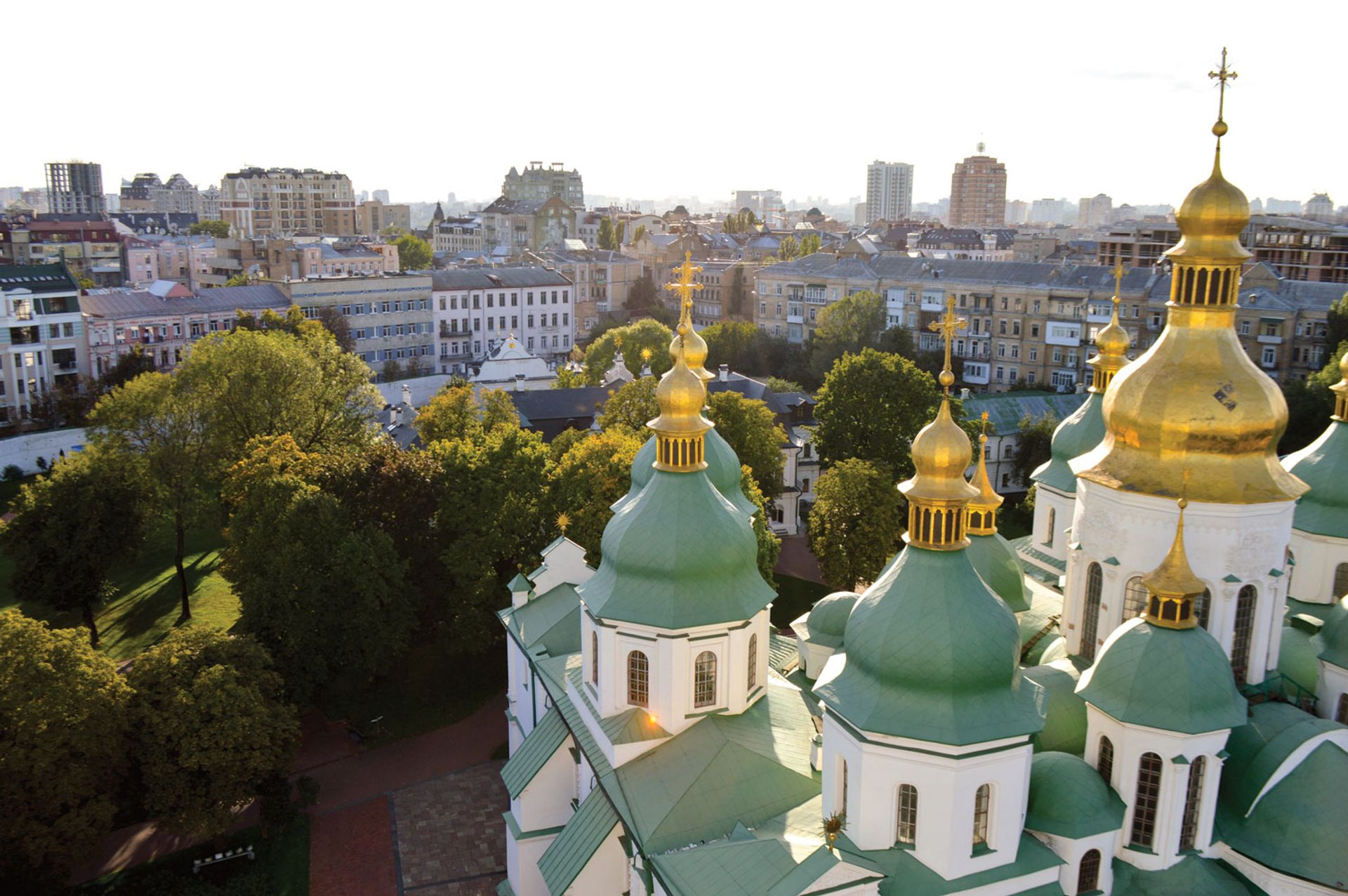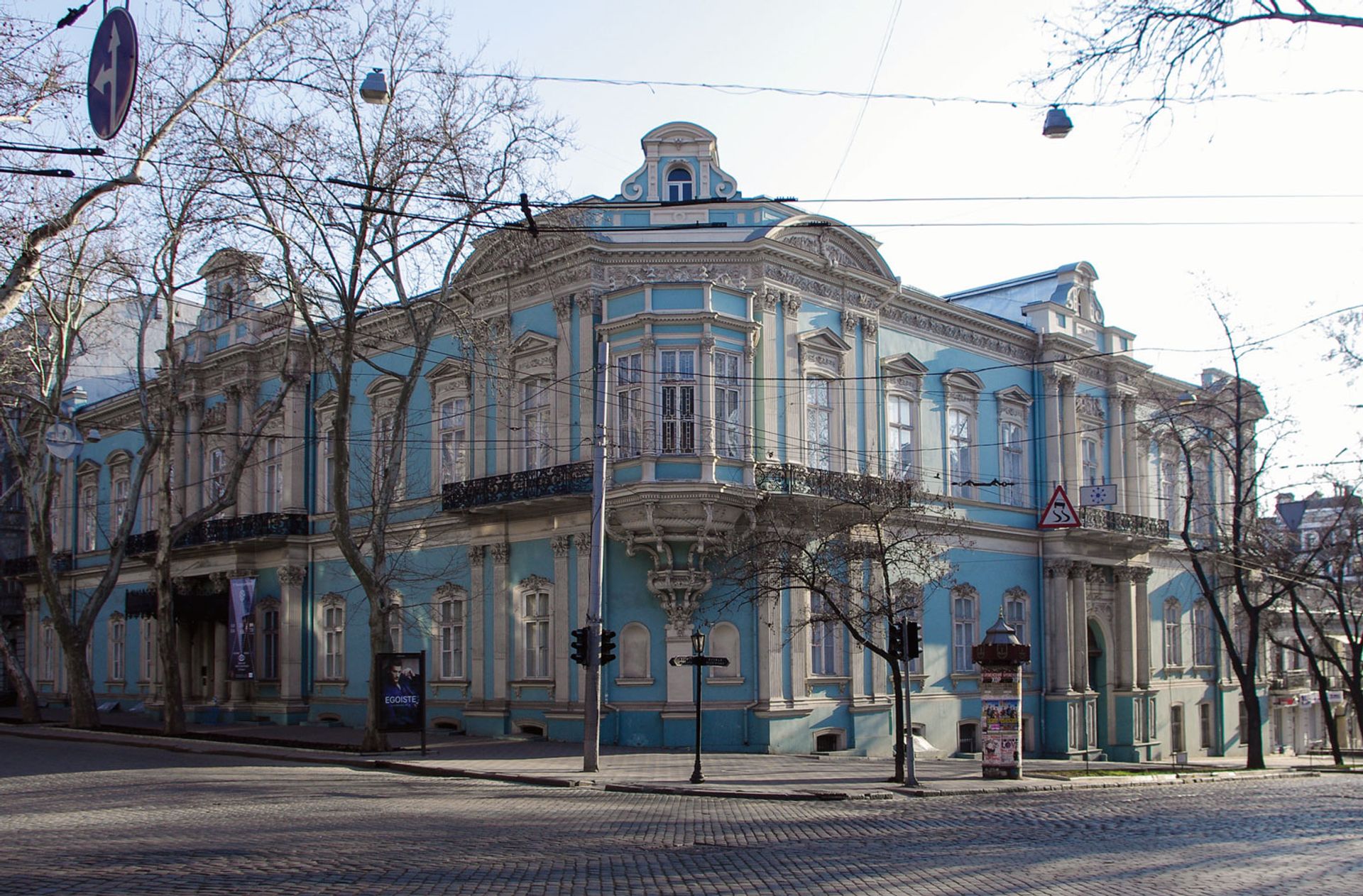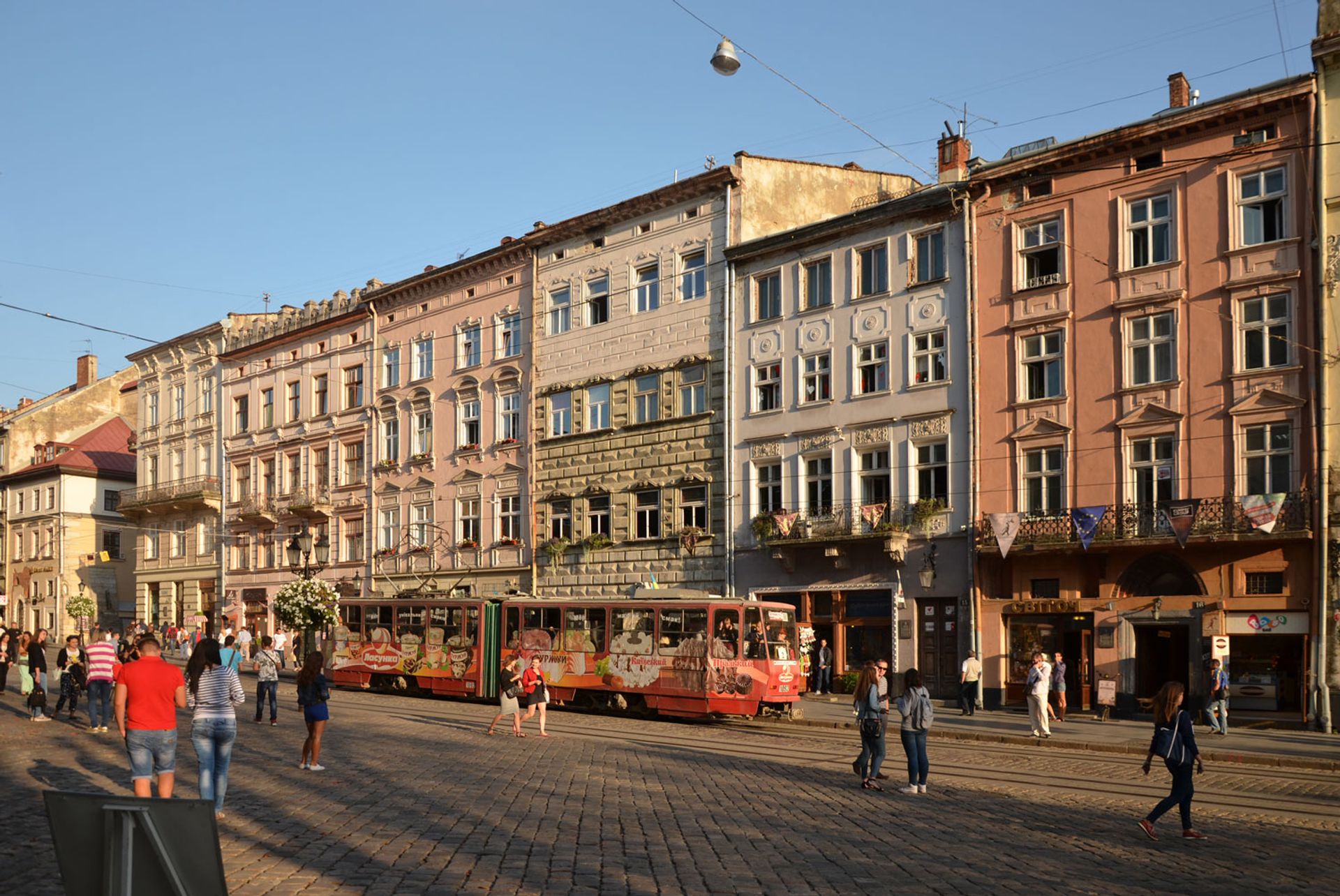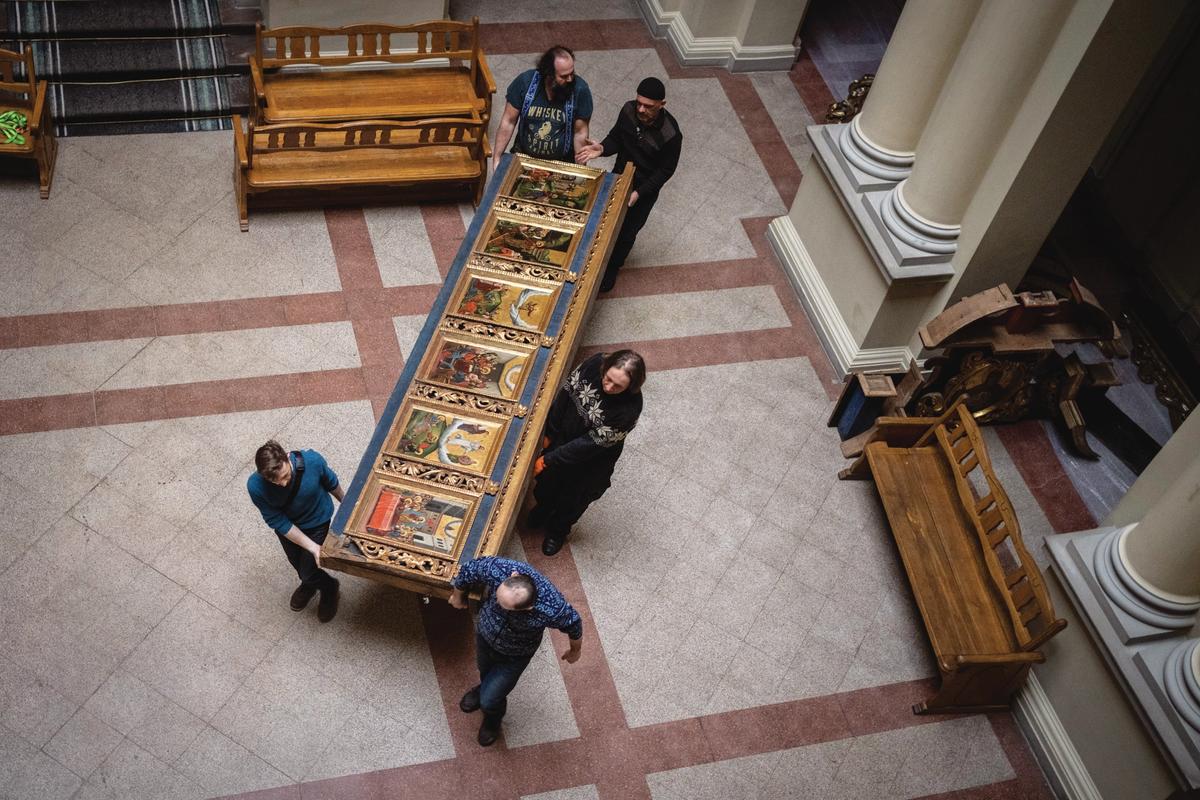Since Russia invaded Ukraine on 24 February, it has besieged the major cities with airstrikes and artillery fire. Civilian casualties are mounting, and the escalating violence has triggered an exodus of 3.7 million people, the fastest-growing refugee crisis in Europe since the Second World War. The indiscriminate bombing of urban quarters including the capital Kyiv, the second-largest city Kharkiv and the southern port of Mariupol has raised fears that Russian forces will repeat the devastation seen in past conflicts in Chechnya and Syria.
Amid the unfolding human catastrophe comes the threat of irreversible damage to Ukraine’s rich cultural heritage. Monuments and museums that represent powerful sources of collective memory and identity are caught in the crossfire. The war has already damaged cultural sites such as the Kuindzhi Art Museum in Mariupol, a Gothic revival library in Chernihiv, the Babyn Yar Holocaust memorial complex in Kyiv, the Soviet-era Slovo (Word) apartment block in Kharkiv that was built to house Ukrainian writers and artists, and the local history museum of Ivankiv (from which celebrated works by the Ukrainian folk artist Maria Prymachenko are believed to have been saved from fire).
Museum officials, heritage custodians and civilian volunteers are safeguarding cultural treasures from the bombs as best they can, while international agencies are rallying emergency funds and practical aid on the ground. It is a race against time. The terrible irony is that many of these artefacts are connected to Russian culture. “It looks like we have to hide Russian paintings from Russian shells,” said Valentina Myzgina, the director of the Kharkiv Art Museum, speaking after the museum’s windows were blown out on 8 March. “We hid them safely, however the very definition of ‘safety’ today is relative.”
Here, we look at the most significant endangered monuments and museum collections within four of Ukraine’s key cities. Their destruction would be a grave loss not only for Ukraine but for world culture. As stated in the Hague Convention of 1954, to which Russia and Ukraine are both party, “damage to cultural property belonging to any people whatsoever means damage to the cultural heritage of all mankind”.

Kyiv’s 11th-century St Sophia Cathedral, symbol of the Ukrainian nation Photo: Francisco Anzola/Flickr Commons
Kyiv
The Ukrainian capital was the namesake and centre of the Kyivan Rus, the first East Slavic state founded in the 900s. Its Orthodox Christian heritage dates back nearly 1,000 years, including the 11th-century St Sophia Cathedral, the symbol of the Ukrainian nation, and the sprawling Monastery of the Caves (Pechersk Lavra) on the bank of the Dnieper river, which are inscribed together on Unesco’s World Heritage list. With its superb mosaics betraying Byzantine influence, the cathedral is precariously located near the headquarters of the Security Service of Ukraine, a target for Russian bombardment.
Kyiv is also Ukraine’s cultural capital, with more than 30 museums. The Museum of Historical Treasures of Ukraine has one of the world’s finest collections of Scythian gold. Its pride is the fourth-century BC Golden Pectoral, a breastplate excavated from the Tovsta Mohyla burial mound. The National Art Museum of Ukraine houses a wealth of masterpieces, with strong holdings of Ukrainian Baroque icons and paintings and 19th- and 20th-century Modernism. Highlights include Life (1927), a triptych by the Klimt disciple Fedir Krychevsky that was triumphantly exhibited at the Venice Biennale, and Sharpening the Saws (1927) by Oleksandr Bohomazov, the quintessential Ukrainian Futurist painter.
However, Kyiv is not only rich in collections of Ukrainian art. European Old Masters, Asian art and Russian paintings are amassed in two palaces that once belonged to pre-revolutionary collectors and philanthropists. The Bohdan and Varvara Khanenko National Museum of Arts houses works by Gentile Bellini and Juan de Zurbarán, among others. The Kyiv Picture Gallery National Museum holds the collection of Ivan Tereshchenko, a friend and rival of Pavel Tretyakov, who founded Moscow’s Tretyakov Gallery. This important museum of Russian art has many works by the Symbolist painter Mikhail Vrubel.

Odesa Museum of Western and Eastern Art, home to Frans Hals masterpieces Photo: Wikimedia Commons
Odesa
Hit by Russian forces for the first time this week, this port city on the Black Sea is bracing for battle. Sandbags are piled up around monuments such as the statue of Odesa’s first mayor, the Duke of Richelieu, in the square at the start of Prymorskyi Boulevard, the city’s architectural gem. The square is connected to the port by the Potemkin Stairs, built in 1837-41, which became a symbol of the city after featuring in Sergei Eisenstein’s 1925 film Battleship Potemkin. The Odesa Museum of Western and Eastern Art has masterpieces such as Frans Hals’s paintings of St Luke and St Matthew, once owned by Catherine the Great of Russia. The Odesa Fine Arts Museum holds a collection formed by the city’s last pre-revolutionary mayor, Mikhail Braikevich, focusing on Russian turn-of-the-century artists from the World of Art group. After the revolution, he emigrated to the UK, where he bequeathed a second collection of works by the same artists to Oxford’s Ashmolean Museum.

Market Square in Lviv, where the entire historic centre is classified as a Unesco World Heritage site Photo: Wikimedia Commons
Lviv
Though missile strikes have hit the outskirts of Lviv, it remains a relative safe haven for those fleeing eastern Ukraine. Located less than 50 miles from the Polish border, the western city has been inscribed as a Unesco World Heritage site since 1998. Since its founding in the 13th century, it has been part of the kingdom of Poland, the Austro-Hungarian Empire, the First Polish Republic and the Soviet Union. A melting pot of Polish, Ukrainian, Jewish and Armenian cultures, its historic centre preserves traits of all of them. Polish and Ukrainian cathedrals, Medieval Armenian churches and Renaissance and Baroque palaces crowd around the market square.
The museums hold important examples of western European and Ukrainian art, not least the exquisite Baroque wooden sculptures of Johann Georg Pinsel, which have been exhibited at the Louvre in Paris and the Belvedere in Vienna. The most significant art collections are those of the Borys Voznytsky Lviv National Art Gallery and Andrey Sheptytsky National Museum. In recent weeks, museum staff have rushed to hide objects in storage while Medieval sculptures were removed from the churches or protected by sandbags. The city’s proximity to Poland has made it a hub for receiving Western deliveries of urgently needed packing materials and protective equipment.

Kharkiv’s Constructivist skyscraper complex Derzhprom (House of State Industry) in Freedom Square, built in 1928, is in the zone of constant Russian shelling Photo: Oleksandr Malyon/Wikimedia Commons
Kharkiv
The eastern city now nicknamed the Ukrainian Stalingrad has been under Russian bombardment from the first day of the war. The capital of the Ukrainian Soviet Socialist Republic from 1919 until 1934, Kharkiv was transformed into the shop window of Soviet modernity. Its gigantic Constructivist buildings are in stark contrast to ancient Kyiv. Three essential Constructivist edifices in the city are the enormous Derzhprom (House of State Industry, 1928) in Freedom Square, the Central Post Office (1928-29) and the Telephone Exchange (1930). All three buildings are in zones of constant Russian shelling. They have not sustained significant damage yet, but bombs have already destroyed houses nearby.
The collection of the Kharkiv Art Museum, which includes more than 25,000 paintings, sculptures and works on paper, was not taken into storage until 8 March, when Russian shelling shattered the windows. The attack endangered paintings by the renowned Russian realist Ilya Repin, including the second version of Reply of the Zaporozhian Cossacks (1893).


